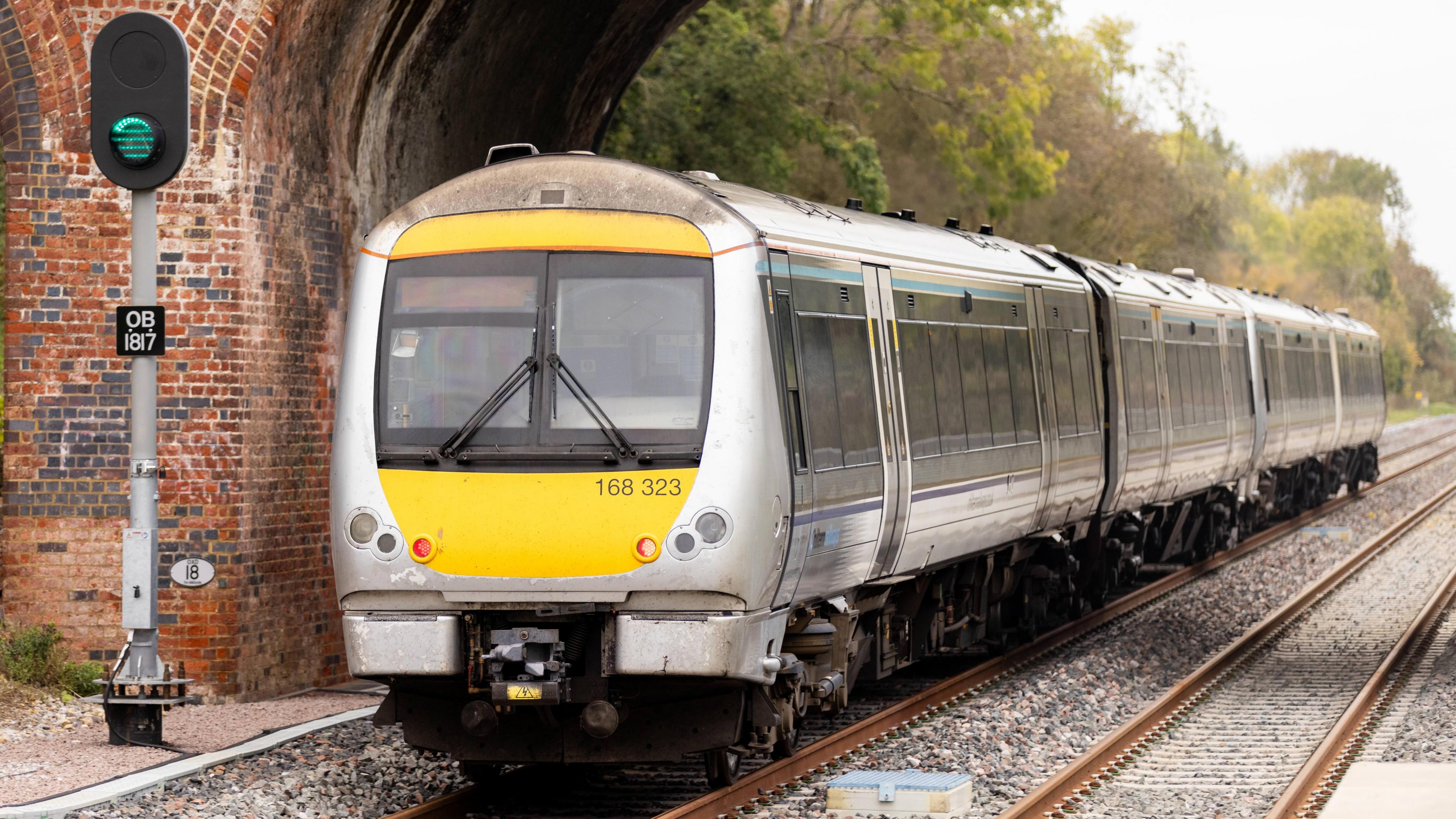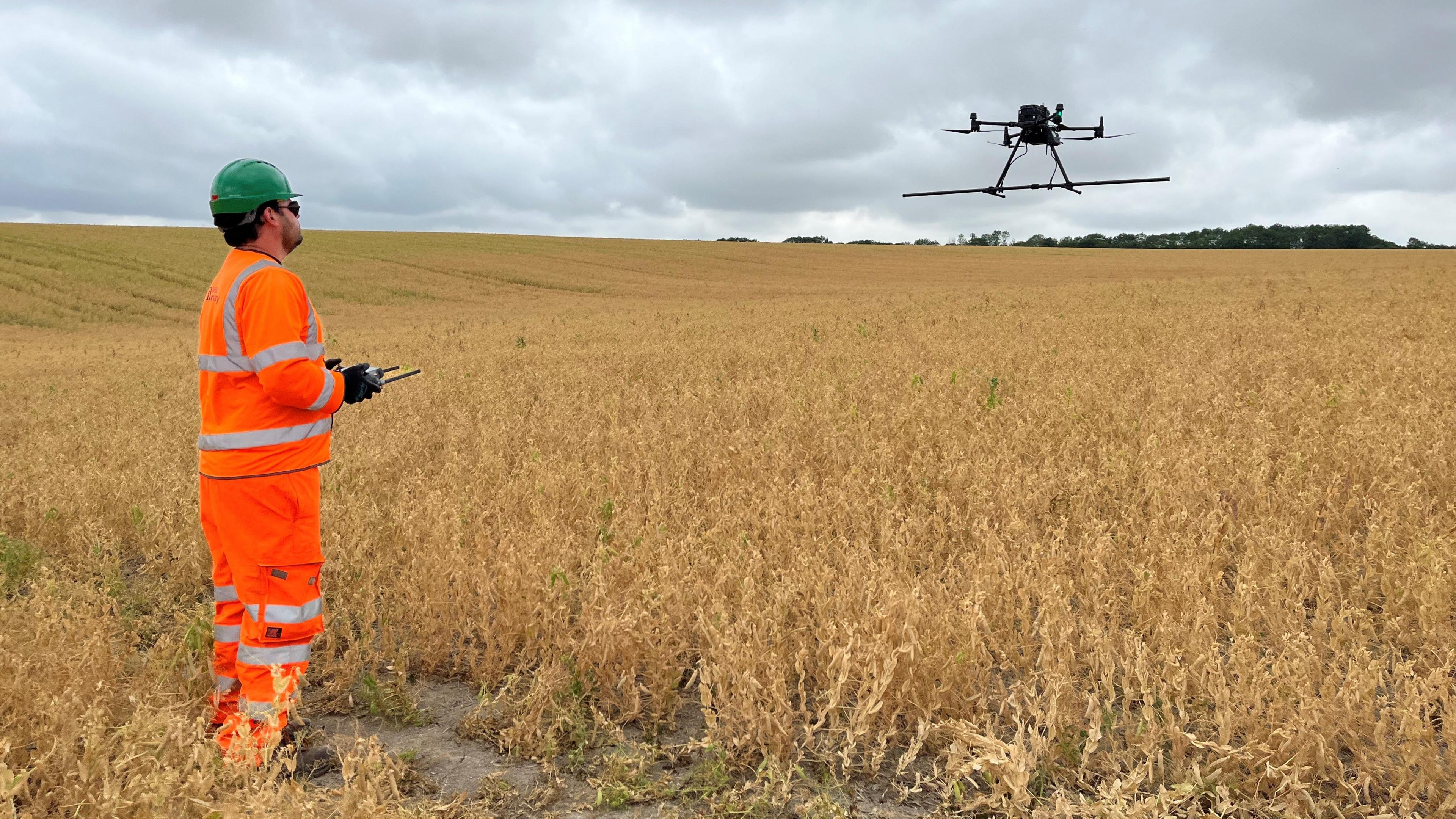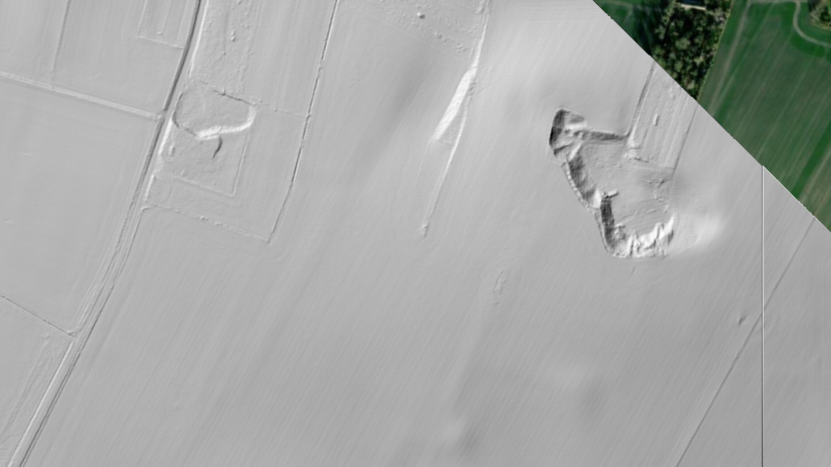Ancient burial site by EWR gets protected status

East West Rail will connect Oxford to Cambridge, via Milton Keynes and Bedford with the preferred route of the line into Cambridge passing Money Hill
- Published
The integrity of a 4,000-year-old burial ground will be protected as part of the development of the East West Rail line.
The site on Money Hill, between Haslingfield and Barrington in Cambridgeshire, is home to 11 ancient burial mounds which form part of a multi-period landscape.
East West Rail aims to create a railway connecting Oxford to Cambridge via Milton Keynes and Bedford - with the preferred route of the line into Cambridge passing Money Hill.
Tristan Lincoln-Green, Head of Environment at EWR Co, said: "Our proposals have evolved through collaboration to ensure this nationally significant site is protected, demonstrating how development and heritage can successfully co-exist."
The site - a so-called round barrow cemetery - was awarded protection from the Department for Culture, Media and Sport on advice from Historic England.

Surveys at the site identified some of the mounds vary between 20 and 55 metres in diameter
Barrows are mounds of earth or stone, external of various shapes and sizes that are characteristic of the prehistoric periods from about 3800 to 1400 BC.
The mounds at the site vary from 20 to 55 metres in diameter, suggesting different approaches to burial rites and indicating that the site was used over several centuries.
Archaeological surveys have led to the discovery of six additional barrows at Money Hill, bringing the total amount on the site to 11.
The protected area also includes some spaces between the individual barrows where there were flat burials.

EWR has evolved its original plans to protect the integrity of the site
Geophysical surveys have revealed potential pits within some of the ring ditches - with three of the barrows visible as earthwork mounts despite centuries of agricultural activity.
Due to the arrangement of the land, the railway firm evolved its original plans to place the railway in a cutting to a mined tunnel, which will also protect the integrity of the ancient site.
Tony Calladine, East of England regional director at Historic England, said: "The ancient burial grounds of Money Hill in Cambridgeshire demonstrate the importance of our historic landscapes and the stories they tell of our ancestors.
"The archaeological surveys carried out for East West Rail have given an amazing insight into Bronze Age life and led to the protection of this important site, connecting us with communities from the past as the infrastructure project connects people today."
Get in touch
Do you have a story suggestion for Cambridgeshire?
Follow Cambridgeshire news on BBC Sounds, Facebook, external, Instagram, external and X, external.
Related topics
- Published15 November 2024
